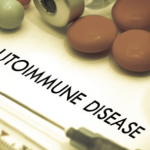 EULAR—Over the past 20 years, a medical center in Ankara, Turkey, has collected data on the real-life treatment of patients with rheumatoid arthritis (RA), which appear to be consistent with treatment guidelines. During EULAR 2021, June 2–5, Ali Ihsan Ertenli, MD, presented a study exploring the first-line biologic treatment trends for patients with RA at this medical center using data from the Hacettepe University Rheumatology Biologic Registry (HUR-BIO) from 2001–20.1
EULAR—Over the past 20 years, a medical center in Ankara, Turkey, has collected data on the real-life treatment of patients with rheumatoid arthritis (RA), which appear to be consistent with treatment guidelines. During EULAR 2021, June 2–5, Ali Ihsan Ertenli, MD, presented a study exploring the first-line biologic treatment trends for patients with RA at this medical center using data from the Hacettepe University Rheumatology Biologic Registry (HUR-BIO) from 2001–20.1
The registry captures biologic disease-modifying anti-rheumatic drug (bDMARD) use and patient data related to demographics, disease and treatment, as well as adverse events experienced by these patients. Limited serologic data were also reported. Patients who began bDMARDs in 2005 were automatically registered for the study, and patients who commenced bDMARDs prior to 2005 were retrospectively registered.
The Data
The distribution of first-line biologic treatments was calculated in five-year increments, starting in 2001. By the end of 2020, 2,080 patients with RA were registered in HUR-BIO, mostly women (79.5%) with a mean age of 53.3±17.8 years when first prescribed a bDMARD. The rate of anti-cyclic citrullinated peptide positivity was 61%, and the rate of rheumatoid factor positivity was 67.8%.
The rates of patients prescribed their first bDMARDs were:
- 2% (n=65) from 2001–05;
- 1% (n=335) from 2006–10;
- 2% (n=858) from 2011–15; and
- 5% (n=822) from 2016–20.
Multiple treatments were approved in Turkey during the study period: infliximab in 2003, etanercept in 2004, adalimumab in 2005, rituximab in 2009, abatacept in 2010, golimumab in 2013, tocilizumab in 2013, certolizumab in 2014 and tofacitinib in 2015.
The distribution of actual first-prescribed bDMARD treatments by five-year periods were:
- 2001–05: 100% anti-tumor necrosis factor (TNF) α agents (adalimumab: 23%; etanercept: 46%; infliximab: 31%);
- 2006–10: 96.4% anti-TNF-α agents (adalimumab: 33%; etanercept: 46%; infliximab: 17%) and 4% rituximab;
- 2011–15: 65% anti-TNF-α agents (adalimumab: 22%; etanercept: 27%; infliximab: 8%), 18% abatacept, 16% rituximab, 4% golimumab, 4% certolizumab, 1% tocilizumab, 0.7% tofacitinib; and
- 2016–20: 40% anti-TNF-α agents (adalimumab: 19%; etanercept: 7%; infliximab: 1%), 26% tofacitinib, 12% tocilizumab, 12% abatacept, 10% rituximab, 8% certolizumab and 5% golimumab.
Etanercept was the most commonly prescribed anti-TNF-α agent. However, as time progressed, researchers found an increase in the use of non-anti-TNF-α bDMARDs, including a rise in the use of Janus kinase inhibitors (jakinibs) during the last five-years evaluated (2016–20).
Michele B. Kaufman, PharmD, BCGP, is a freelance medical writer based in New York City and a pharmacist at New York Presbyterian Lower Manhattan Hospital.

